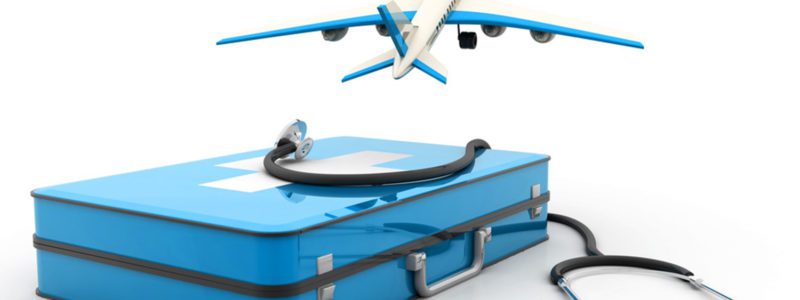
The flow of health tourists from Ukraine to Germany grows by some 15-20% every year, and the sharp growth was seen after the introduction of visa-free regime, Director of DeutschMedic GmbH Anna Weegen (Essen, Germany) has told Interfax-Ukraine. “In 2019, it will be the 21st year, as I organize the arrival of patients from the countries of the former USSR for treatment in Germany. According to my observations and according to the press, the flow from Ukraine is increasing annually by 15-20%. A significant jump occurred after the abolition of the entry visas to the countries of the Schengen legislation of the European Union for holders of Ukrainian biometric passports, “she said.
The cheapening of air links between Ukraine and Germany contributes to the increase in the flow of medical tourists, according to the expert. Weegen said that foreign patients can receive almost all the services that modern medicine has in its arsenal in German hospitals, with the exception of only legally regulated features in transplantation and artificial insemination.
In particular, for patients from Ukraine, requests for treatment of oncology are currently the most relevant. Neurology is second, outperforming traditionally high-demand cardiac interventions (electrophysiology, stenting, valve replacement, and aortocoronary shunting), orthopedics is in fourth place, including total joint replacement.
“Practically each of the patients who receive medical services in the above-mentioned disciplines necessarily uses the services of related specialists, and at the end of the treatment – some types of rehabilitation,” the expert said, noting the growing popularity of preventive annual check-ups.
Weegen said that currently there are no legislative acts in Germany prescribing medical institutions to report to any authorities on the number of foreign patients. However, those institutions that have not some foreign patients, “but dozens and hundreds, keep their own internal statistics, which is sometimes shared with the press or economic authorities.”
“In Germany there are almost 2,000 hospitals with a total fund of about 500,000 beds, and 20 million inpatients per year. At the same time, there are hospitals where there have never been foreign patients, but in some clinics the proportion of medical tourists can approach 10% of the total number of patients,” she said.
In this case, medical tourists receive not only inpatient, but also outpatient treatment in Germany, using the services of medical practices, which in Germany are more than 75,000.
“Many foreign patients receive outpatient services in clinics where statistics is not collected by anyone. The same applies to numerous sanatoriums, rehabilitation centers, prosthetic institutes and other institutions,” she said.
According to Weegen, in the coming years, medical tourists will come to Germany, mainly to receive high-tech medical care, in particular, complex surgical or catheter interventions, robot-assisted surgeries, radiation, that is, all that domestic medicine, due to the high cost of technology, has not yet implemented everywhere.”
At the same time, according to the expert, “primary diagnosis is made in the country of residence,” and the patient receives the second opinion in Germany. Then the patient has a surgery in the country of residence. He or she comes to Germany for radiation and chemotherapy, and then continues chemotherapy at the place of residence.
“This approach saves the patient’s time and money and gives him or her access to all the achievements of medical progress without a complete separation from the domestic system,” she said.
Weegen said that the share of health care in Germany is about 11% of GDP, and the share of medical tourism in health care is less than 0.04% of GDP.
According to Weegen, according to very rough estimates, approximately 250,000 foreign patients are treated in Germany annually. At the same time, about half of all medical tourists come from the countries of the former USSR.